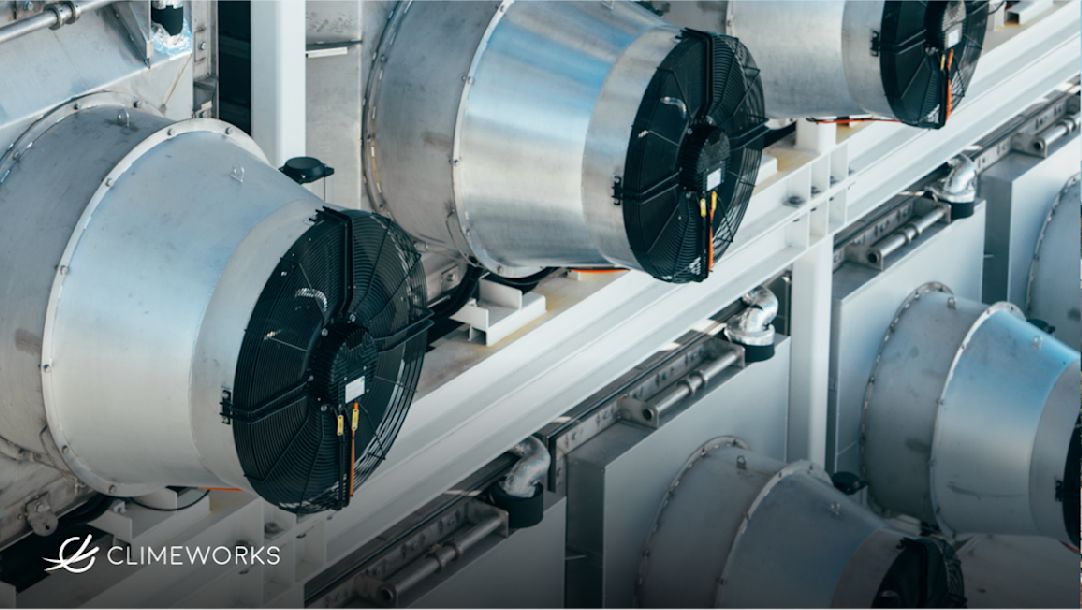Stripe’s first carbon removal purchases
Spring 2021 Update: Request for Projects
We're searching for new carbon removal projects that meet our target criteria to apply for our next round of purchases.
To mitigate the threat of climate change, the majority of climate models agree that the world will need to remove carbon dioxide from the atmosphere on the scale of approximately 6 gigatons of CO2 per year by 2050. That’s roughly the equivalent of the United States’ annual emissions.
Last year, Stripe announced our Negative Emissions Commitment, pledging at least $1M per year to pay, at any price, for the direct removal of carbon dioxide from the atmosphere and its sequestration in secure long-term storage. We’ve since built a small team within Stripe to focus on creating a market for carbon removal by being an early customer for promising carbon removal technologies.
Today, after a rigorous search and review by a panel of independent scientific experts,1 we’re excited to announce our first purchases. Our request for projects garnered a wide range of carbon removal technologies which came in two broad categories.
- Carbon storage in the biosphere: These projects include planting trees or modifying agricultural practices to store more carbon in soil. These projects are relatively less expensive and benefit from immediate scale (we can plant trees today), but have shorter long-term permanence since trees can be easily burned down and carbon storage in soil can be short lived. These solutions alone are unlikely to sustain the necessary 6-15 gigatons of annual CO2 removal.
- Carbon storage outside of the biosphere: Projects in this more nascent category store carbon in places besides plants and soil. Examples include directly capturing CO2 from the atmosphere and injecting it into stable rock formations underground or sequestering CO2 in concrete via mineralization. These solutions are scarce and dramatically underfunded. If they can proliferate and scale, they’ll complement in-biosphere solutions by bringing new benefits: thousand-year or longer permanence and vast carbon storage using minimal arable land.
The world will need a portfolio of carbon removal approaches across these two categories to meet the 2 degree warming target sensibly adopted by many governments. We believe Stripe can make the most impact by focusing our purchases on the latter category to help these solutions improve.
Stripe’s first purchases
From 24 promising applications, we’ve selected four high potential projects that exemplify the kinds of innovation required to advance the field. We’re especially excited to be the first purchaser from three of the four projects. In cases where the projects are still quite early and have low capacity in 2020, we’ve pre-purchased volume for future years.
Climeworks
- Capture + storage
- Zurich, Switzerland
- 322.5 tons at $775 per ton2

Climeworks uses renewable geothermal energy and waste heat to capture CO2 directly from the air, concentrate it, and permanently sequester it underground in basaltic rock formations with Carbfix. While it’s early in scaling, the capacity of this approach is theoretically nearly limitless. It’s also permanent and straightforward to measure. Climeworks has an ambitious cost and volume curve, with a long-term price target of $100-200 per ton. Though this technology is expensive today, we’re optimistic it will decrease in cost quickly with more early purchasers.
Project Vesta
- Capture + storage
- San Francisco, USA
- 3,333.3 tons at $75 per ton

Project Vesta captures CO2 by using an abundant, naturally occurring mineral called olivine. Ocean waves grind down the olivine, increasing its surface area. As the olivine breaks down, it captures atmospheric CO2 from within the ocean and stabilizes it as limestone on the seafloor. This is a compelling approach because it provides permanent sequestration with the potential for very high volume at low cost. Questions remain about safety and viability: to validate coastal enhanced weathering, more lab experiments and pilot beach projects must be performed. Stripe is Project Vesta’s first customer and our purchase will accelerate their safety study and deployment timeline.
CarbonCure
- Storage only
- Halifax, Canada
- 2,500 tons at $100 per ton

CarbonCure’s technology sequesters CO2 in concrete by mineralizing it into calcium carbonate (CaCO3)—as a bonus, this has the side effect of actually strengthening the concrete. This solution is compelling because it’s permanent, relatively low cost, and could scale to the size of the global concrete market, sequestering >0.5 gigatons of CO2 annually. Today, CarbonCure captures most of its CO2 from industrial emitters such as ethanol, fertilizer, or cement plants. In the future, CarbonCure’s technology could use CO2 from direct air capture technologies once they become more readily available and economical, forming a full negative emissions technology. Stripe is CarbonCure’s first customer to purchase carbon sequestration, and the transaction will enable them to subsidize their costs.
Charm Industrial
- Storage only
- San Francisco, USA
- 416 tons at $600 per ton

Charm Industrial has created a novel process for preparing and injecting bio-oil into geologic storage. Bio-oil is produced from biomass and maintains much of the carbon that was captured naturally by the plants. By injecting it into secure geologic storage, they’re making the carbon storage permanent. Stripe is Charm Industrial’s first customer for this approach, and Stripe’s purchase lets them begin testing this year.
Open-sourcing our materials
Over the last few months, we’ve brought together experts across a series of disciplines and institutions to guide us. We have published our process, applications, and project database on GitHub to equip other potential purchasers with better information and encourage transparency in carbon removal purchasing.
Source materials
Project applications, project database, original purchase criteria, expert review forms and more.
We’ve also partnered with CarbonPlan, a non-profit that evaluates carbon removal technologies and maintains a public database of project reports with independent analysis and visualization of public data, including each project application considered by Stripe.
Expanding our commitment
Much like the early-stage businesses that get started on Stripe, we recognize that many of the future impactful projects are still quite nascent today.
In addition to reducing our own emissions, and helping projects transition from R&D to commercial deployment by purchasing at any price per ton, Stripe will expand its commitment to advance carbon removal technologies by:
- Funding early-stage research to increase the number of projects with a credible path to achieving ambitious impact.
- Raising money to create a large-scale market for carbon removal. We’ve been encouraged by how many businesses, including many Stripe users, have offered to purchase alongside us. We’d like to make it easier for companies to contribute to the most promising and impactful carbon removal technologies and measure their impact.
We’ve developed a set of project criteria that characterize the kinds of solutions needed to help round out the existing gaps in the carbon removal portfolio. Stripe is excited to support projects that have the potential to achieve these criteria by 2040, even if they don’t yet achieve them today.
Stripe carbon removal target criteria
|
Criteria
|
Today
|
Target by 2040
|
|---|---|---|
|
Sequestration beyond the biosphere
Takes advantage of carbon sinks less constrained by arable land, e.g. carbon mineralization |
Yes | Yes |
|
Volume
Has a path to being a meaningful part of the carbon removal solution portfolio |
> 0.5 gigatons per year | |
|
Cost
Has a path to being affordable at scale |
< $100 per ton | |
|
Permanence
Stores carbon permanently |
> 1,000 years | > 1,000 years |
|
Verifiability
Uses scientifically rigorous and transparent methods for verification |
Modeled or measured directly | Modeled and measured directly |
|
Quality and safety
Is globally responsible, considering possible risks and negative externalities |
Path to high | High |
|
Net-negative lifecycle
Reduces net atmospheric CO₂ expressed as a ratio subject to appropriate boundary conditions: [Emissions produced] : [CO₂ removed from the atmosphere] |
Negativity ratio ≤ 1 | Negativity ratio < 1 |
We hope that this approach will accelerate technological developments to remove and store carbon at the required scale, cost, and quality level.
Call to action
Our goal is not only to remove carbon from the atmosphere, but to become an early member of an ecosystem of funders and founders who will invent ways to solve the world’s largest collective problem. We continue to search for great projects, purchasers, and experts. Please reach out to us to work together on this effort or to give us any feedback. We can be reached at climate@stripe.com. (And if you’re an engineer or designer who cares about climate impact, consider joining our team).
Projects
Let us know how Stripe can support your negative emissions project.
Funders
Stay informed about future opportunities to fund negative emissions.
Experts
Share your feedback to make our process better going forward.
